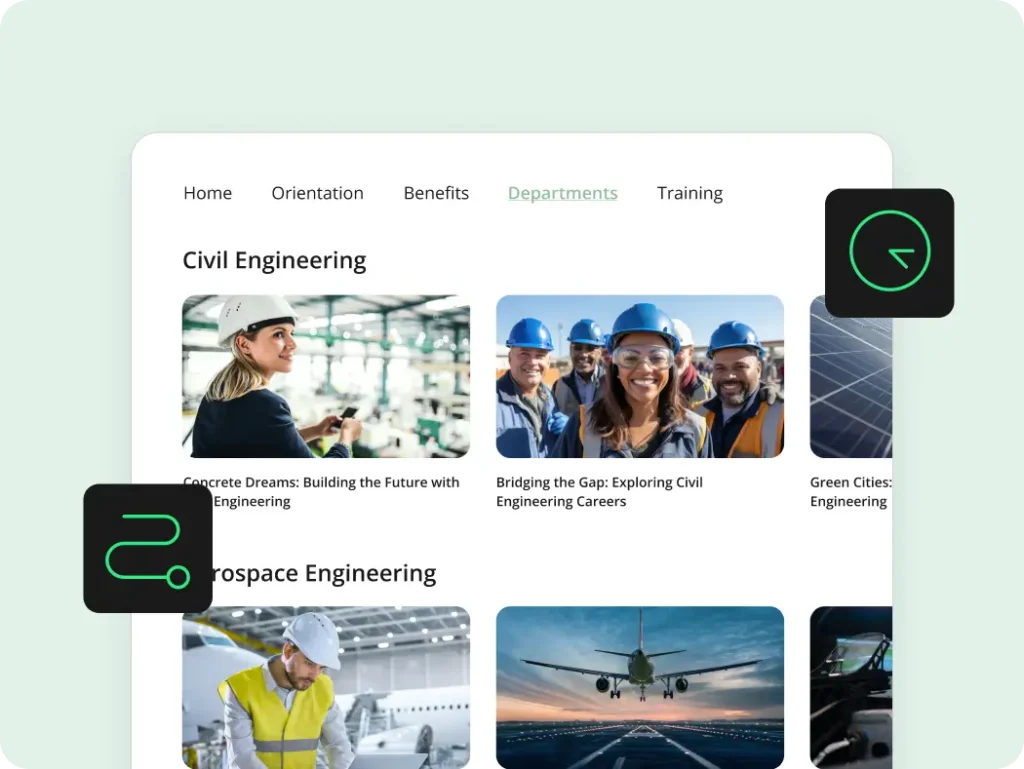- Onboarding
How Long Should Onboarding Take?

How long should onboarding take? Most employee onboarding programs aim to get new hires up to speed as soon as possible so they can begin contributing their talents to the business. And time is particularly important when filling a role someone else left unexpectedly.
What is onboarding? And how long does it take?
Employee onboarding is important and should take over a month to achieve impactful results.
Effective onboarding programs not only improve productivity but also raise employee retention. 62 percent of companies with a structured onboarding program see faster time-to-productivity. Completing a structured onboarding program makes employees 58 percent more likely to remain with the organization after three years.
Furthermore, in today’s competitive job markets, your top talent may already be looking to leave—one-third of new hires who have been in their roles for six months or less are searching for a new job.
In response to current trends, there is a growing sentiment that the onboarding process should last much longer than it currently does.
What makes an effective onboarding process
Studies show that onboarding programs that last less than a month are detrimental to retention rates. That means that only 28 percent of companies invest enough time in the onboarding process to significantly impact the business.
One month, or even less, isn’t enough time for a new employee to complete compliance tasks, get acclimated to the company’s culture, receive sufficient job-specific training, adjust to new technologies, and decide whether the company and role are a good fit.
How long does onboarding take for a new job?
Considering nearly nine out of ten companies aren’t even reaching the three-month mark when it comes to onboarding, extending employee onboarding programs to run for a full year may seem like an impossible challenge. However, given growing data on the potential benefits of extended onboarding, more and more HR leaders are pushing harder for this change.
With 90 percent of employees determining whether or not they’ll stay in a role within the first six months, nurturing new employees past the six-month mark is becoming more critical. Longer onboarding programs allow companies to design structured, relational onboarding programs that, over the first year, can increase new hire retention by 25 percent compared to shorter, transactional onboarding processes.
What is relational onboarding?
Relational onboarding describes a process for welcoming new hires into your organization and nurturing them to their maximum performance level through a humanized process that builds trust and confidence. This process includes expectation setting, providing support, and clearly defining responsibilities.
Relational onboarding takes more time than purely transactional onboarding (for example, the classic onboarding tasks of completing new hire paperwork and learning the basics from the employee handbook). However, the time-to-productivity for new hires is accelerated in a relational onboarding process. This means you’ll have more time to incorporate other meaningful learning into your onboarding.
Learning is a year-long effort in the onboarding process
Shorter onboarding processes often inundate new employees with a flood of information—much of which is hard to retain. While you may add more learning to your onboarding process by extending it for up to a year, learning can be spread out and structured into smaller bite-sized chunks that improve learning and retention.
The advantages of longer onboarding processes
Employees continue learning to higher levels
With a longer onboarding process, learning doesn’t stop when the employee is proficient. Continuing formal learning that allows the employee to develop new skills benefits the organization as much as it does the employee’s professional development. More and more organizations are incorporating long-term learning modules during onboarding that teach soft and technical skills.
Employers guide collaborative learning
A yearlong onboarding process should include expectation-setting and clear definitions of the role and guide collaborative or social learning. The benefits of adding a collaborative learning element to the onboarding process are two-fold:
- 90 percent of what employees learn at work is through personal and shared experiences with colleagues, as opposed to formal learning. Integrating collaborative learning into your onboarding process ensures the employee absorbs deeper knowledge from the top minds across your organization.
- Collaborative learning during onboarding also allows the new employee to network within the organization and form deeper bonds with other employees.

Optimizing the onboarding process with video
Wondering how long employee onboarding should take? More and more research suggests that businesses should extend onboarding to a full year — something only 2 percent of companies do.
More compelling than a handbook and more cost-effective than on-location events and seminars, video is one of the best employee onboarding investments a company can make. Download our whitepaper and learn how the right video platform can help you transform your onboarding process by supporting formal learning, social learning, and more.



